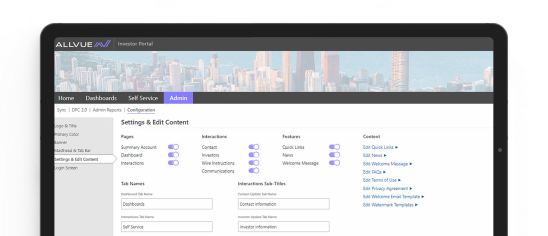
By: Kimberly Kale
Head of Product - Back Office
June 16, 2021
Growth and the COVID-19 crisis are prompting technological soul-searching: As investors move into multiple private markets, there is a growing recognition of the inefficiencies associated with servicing assets on a standalone basis using disparate technologies.
Introduction
Investment in alternative asset markets has continued to grow as General Partners (GPs) – chasing returns and seeking ways to mitigate risk – have diversified their portfolios. With portfolios now holding multiple asset classes, GPs have begun to take notice of inefficiencies inherent in spreadsheets and single-asset systems. In the absence of comprehensive technology solutions which can handle information across multiple asset classes and multiple currencies, GPs find themselves scrambling to reconcile data and information.
For example, direct lending, an asset class that was created in 2008 in response to the Great Financial Crisis, is now the largest area of growth in private capital. Originally focused on small and medium-sized enterprises (SMEs), it grew in importance when banks reduced lending activities to SMEs, and non-bank lenders stepped in to bridge the gap. Now, with non-bank lenders seeking better returns, direct lending has been expanded to include all types of private and public companies, increasing the type of loan structures —both in variety and complexity— that investors must manage and reconcile.
Traditionally, GPs that held a homogeneous set of loans in their portfolios were able to manage the schedules, payments, interest accruals, etc., generated by each loan via spreadsheet. But with investments becoming more sophisticated and diverse, they must now find a more efficient way to control the tsunami of data and information that is being generated.
In the past, many GPs with diversified portfolios have utilized a number of single-asset class systems to manage each asset class separately, since processing is unique and specialized to each and no single system could handle all of the required tasks. However, this created the problem of linking multiple systems together and aggregating datasets originating from each system. While some GPs implemented a stop gap solution by adding more resources and full-time employees to resolve the issue, this was not a viable substitute for being able to reconcile, consolidate, and aggregate different asset types into a single multi-asset class solution.
Why spreadsheets and single-asset solutions are not the answer
The challenges associated with the utilization of spreadsheets and single-asset systems to reconcile, track, and maintain a dynamic portfolio fall into four main buckets:
- No method for gathering and reconciling multiple types of disparate data. As private capital portfolios become more diversified to include multi-asset and multi-currency investments, investors have begun to recognize the need for automated, end-to-end solutions to manage and reconcile their portfolios.
- Lack of uniform automated workflows. Without the ability to conform and automate workflows from front- to back- office, internal stakeholders are subject to replicating tasks, manual error, and decreased productivity.
- Difficulty in producing high quality reporting. Being able to supply both custom and ad hoc reports to LPs and internal stakeholders is a time-intensive effort. And with LPs especially demanding greater transparency from GPs via timely and accurate reports, the task of producing reports without employing standardized, streamlined processes takes GPs away from higher-value tasks.
- Absence of efficient and uniform tools or processes to evaluate performance or risk. If they’re not utilizing analytics and business intelligence capabilities to drill down into the details of their portfolio and forecast portfolio performance, GPs will lack the insight they need to deploy capital effectively, gain visibility into existing positions and exposures, and identify trends that may affect their portfolios.
The multiple benefits of upgrading technology
For GPs, both portfolio performance and investor responsiveness are important to their credibility in the industry and with their LPs. As a GP’s business grows, investors are not as willing to accept delayed response times when seeking investment information. Partially spurred by the COVID pandemic and partly due to long-borne frustration, expectations around information delivery have morphed rapidly over the past 12 months as nervous LPs demanded a quicker turnaround for their requests. For larger GPs, this expectation of rapid response, along with the growing complexity and maturity of their business has sparked the realization that without a technology system in place to handle the renewed pace of reporting queries, fulfilling stakeholder requests would be difficult.
Moreover, with investors now also focused on ESG concerns, the data efficiency required to thoroughly measure all relevant KPIs is not achievable without a technical solution in place. Simply, with portfolio investments in multiple industries across multiple geographies, asset classes, etc., monitoring the massive number of KPIs in Excel is neither practicable nor a realistic goal.
In response to this quandary some GPs with multi-asset class portfolios, aware of the inherent difficulty of managing their portfolios across multiple systems, have outsourced the servicing of their portfolios, convinced that the complexity of their investments precludes them from doing the work in-house. While an outsourcing solution makes sense for some, there are now all-in-one technology platforms that can address and solve for this complexity, allowing GPs to oversee their own investments more easily.
Notably, technology specifically geared toward participants in the private capital markets can, in general, help GPs act more quickly in pursuit of deals since they are able to make better investment decisions with the higher-quality information that results from having a fully-integrated, end-to-end technology solution in place.
What’s more, GPs have greater visibility into risk and exposure when utilizing technologies that span asset classes, sectors, geographies, or currencies to unlock crucial decision-making information from within their portfolios.
Managing deals from start to finish also becomes easier with the ability to collaborate, letting all stakeholders access the same information, share workflows, and work from centralized data repositories.
Tools that calculate and forecast the potential investment impact on a portfolio also facilitate decision-making for investors, helping to evaluate performance by asset type, monitor risk, develop forecasts, and visualize data.
Lastly, GPs with an end-to-end technology stack realize cost savings and tamp down instances of manual error via automated workflows and reporting features. By utilizing fewer resources to accomplish the same tasks — with better results — GPs are freed up to diversify into new alternative asset classes without multiplying costs and can focus on fund risk, IRR, and potential exit strategies.
In summary, GPs should consider technology providers who can fulfill the following needs:
- Easy collection and reconciliation of data and information
- Workflow automation
- Comprehensive reporting features for both internal and external stakeholders
- Performance and forecasting tools that quantify risk and IRR and map out exit strategies
How Allvue Systems’ technology solution helps private capital investors
For GPs looking for an all-in-one technology solution that will manage, aggregate and reconcile disparate data, automate processes, provide both standard and bespoke reporting, and better gauge risk and performance, Allvue’s GP Solution is fully-integrated, scalable, and utilizes leading industry technology.
Traditional portfolio monitoring capabilities have focused solely on performance, but that’s only half the story. To get the whole picture, the front-, middle-, and back- office need to be linked by an all-in-one technology so all teams have access to the same information such as cash flows, reporting, etc. And that’s where Allvue comes in.
Allvue’s cloud-based solution set is purpose-built to address the needs of private capital investors, facilitating operational efficiency, improved accuracy, and providing a superior investor experience across multi-asset class and multi-currency portfolios. From smaller start-ups and boutiques to the world’s largest asset managers, we provide the tools to manage workflow, integration, and reporting needs.
With end-to-end collaboration and analytics tools to track key fundraising activities, and portfolio tools that drill down into the underlying data, investors can understand exposures across all funds and business lines and monitor risk in real time. This helps them gain insight across all asset classes, reduce errors, and eliminate manual effort so they can turn data into actionable information, increasing capital efficiency and improving business performance.
From fundraising through to investment, Allvue’s fully-integrated technology automates and streamlines operations and lets GPs manage deals from start to finish—providing everything they need to run their business successfully—regardless of size or strategy.
More About The Author

Kimberly Kale
Head of Product - Back Office
Kimberly is responsible for back office product management at Allvue. She joined Allvue’s predecessor, AltaReturn, in 2009 and has over 25 years of software management, including 18 years servicing the alternative investments industry. Prior to joining AltaReturn, Kimberly spent seven years with FIS/Investran, first in New York, and then transferring to London to manage the EMEA implementation team. She began her career at KPMG Public Services practice in Washington, DC, and moved on to implement ERP solutions for various insurance and healthcare clients. Kimberly holds a Bachelor’s degree from Vanderbilt University and is currently based in Allvue’s Miami headquarters.


